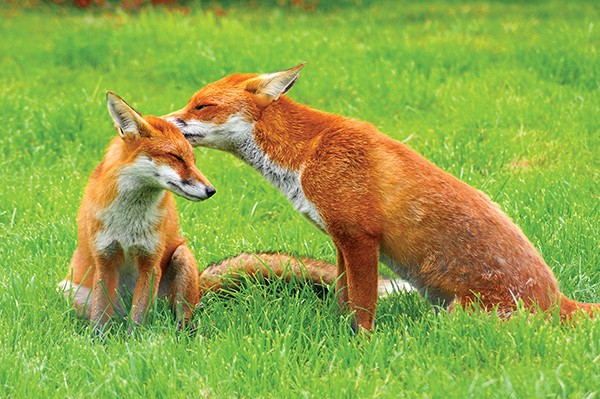
Photo: Stock image
It may appear that there are more urban foxes than ever in and around Dublin, but this is not the case.
They are possibly more visible to us, as habitats they would have enjoyed previously are eroded and denied them. Places like derelict sites and overgrown waste grounds are getting rarer so the ever-adaptable fox is making more use of gardens, under decking, garden sheds and denser parts of public parks. This means they are more likely to be seen roaming the streets and creeping around gardens, thus creating the illusion of a population explosion.
Like this reporter, many residents of Dublin 4 will at one stage or another have been startled or just plain freaked out by the nocturnal screeching of urban foxes. It can sound anywhere between a terrified screaming female and a tortured dog. Because of the lack of background noise, sound travels well at night, so the cries echo eerily through the streets, making it hard to know exactly where they’re coming from. This is going to increase this month and next as their mating season is upon us.
There was a study conducted here last year inviting members of the public to log sightings, but the results have yet to be released. Aside from that, the last look at fox populations was in 1995, when Dublin City Council found an average fox density of one family per square kilometre, although in some parts it peaked at up to five times that. It is quite possible, in fact, that numbers have decreased in the intervening years due to an epidemic of sarcoptic mange.
Other factors many think would keep their numbers down are mainly myths, such as the introduction of wheelie bins removing a food source. Foxes rarely, if ever, feed on bins, so have been unaffected by this.
The rise in the numbers of domestic pets, though, has been a help to the fox population as more food is left out for them to scavenge. The notion that they pose a threat to pets is also something of a myth, although there have been some incidents. Foxes fear confrontation and are hard-wired for flight rather than fight if challenged by dogs or even cats.
NewsFour spoke to a resident in Ballsbridge who leaves scraps of food out for them at night but is still concerned about the safety of her children. Martina told us, “They’re beautiful animals and I’m happy to feed them, but I’m glad my youngest has his room on the first floor, as I would feel uneasy about leaving a window open in the summer in case a fox might get in and attack out of fright.”
Happily, there have been no recorded cases of children being seriously injured or killed by foxes in Ireland. If you want to help out your local foxes by feeding them, Dave Wall of the Mammal Research Group in UCD advises, “If you think the fox looks skinny and needs fattening, don’t bother. Foxes are slinky little animals by nature and they are more than able to feed themselves, especially in a food-rich environment like Dublin. If, however, you want to attract foxes so you can watch them, then by all means do, but always place the food in a spot you can see from your window, one that is well away from the house. Feeding foxes near the house is asking for trouble.
Foxes are inquisitive animals and an open door or window will be explored. It’s not unheard of for foxes to take up residence inside houses or to become trapped in a basement or even an attic! Also, never feed foxes by hand, someone will end up getting bitten and the foxes will pay the price.”
By Steve Kingston

